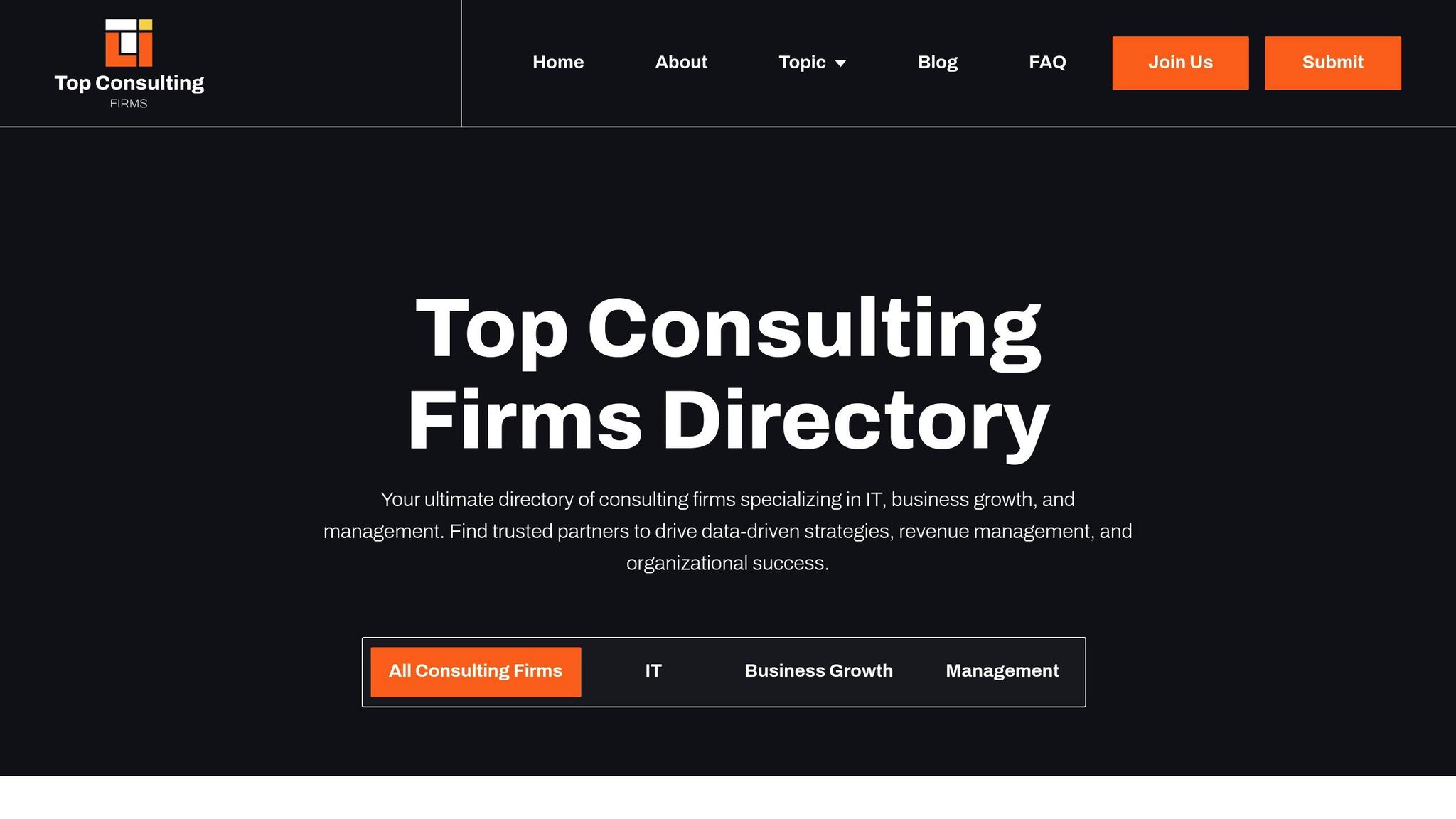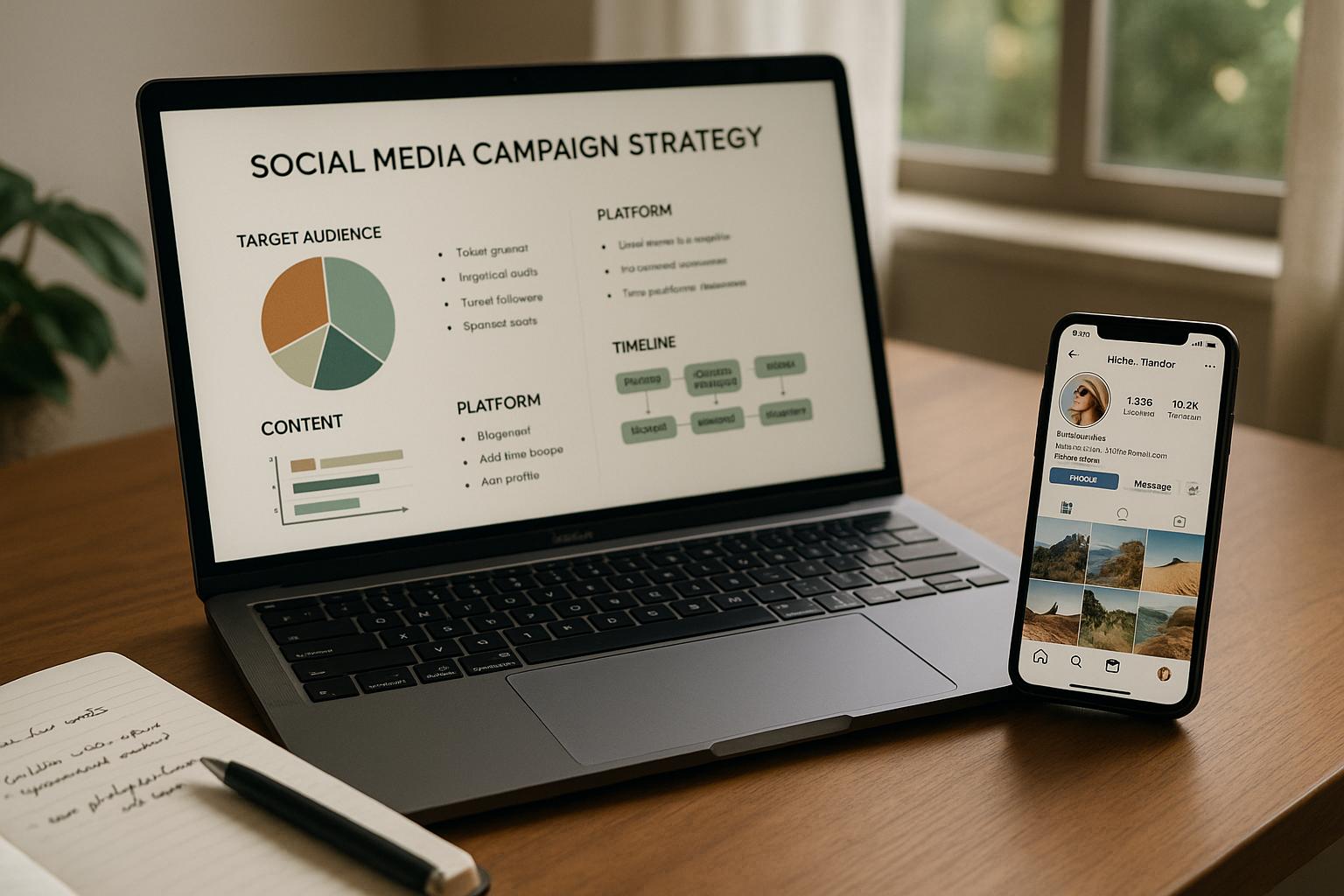Churn prevention is essential for subscription businesses to thrive. High churn rates directly impact revenue, customer lifetime value, and acquisition costs. Here’s what you need to know:
- What is churn? The rate at which customers cancel subscriptions. It’s split into voluntary churn (customer dissatisfaction or changing needs) and involuntary churn (payment failures or billing issues).
- Why it matters: Reducing churn boosts profits by up to 25%. Retaining customers is cheaper than acquiring new ones, and loyal customers spend 67% more than new ones.
- Key challenges: Identifying at-risk customers, personalizing retention efforts, and addressing payment failures.
Quick Tips for Churn Prevention:
- Track Metrics: Monitor churn rate, customer lifetime value (LTV), and monthly recurring revenue (MRR).
- Fix Payment Issues: Use automated dunning systems and credit card updater services to recover failed payments.
- Engage Customers: Personalize communication, improve onboarding, and use loyalty programs to build stronger relationships.
- Leverage Data: Use behavioral data and AI to predict churn risks and act early.
Reducing churn isn’t just about retaining customers - it’s about driving long-term growth. By addressing churn proactively, businesses can improve customer satisfaction, enhance revenue stability, and stay competitive in the growing subscription market.
Keys to Preventing Customer Churn: Data-Driven Strategies
Finding Churn Risks and Root Causes
Stopping churn starts with understanding why customers leave and spotting accounts that might be at risk. Here's a striking fact: 44% of businesses don’t even know their churn rate. Among those that do, the average annual churn rate is 23%. Clearly, identifying and analyzing churn is essential. Let’s break down the two main types of churn: voluntary and involuntary.
Understanding Voluntary Churn
Voluntary churn happens when customers actively decide to cancel their subscription. This is often due to dissatisfaction with the product, service, or perceived value.
There are several warning signs to watch for:
- Behavioral changes: Reduced product usage, fewer logins, or sticking to only basic features.
- Sentiment shifts: Lower Net Promoter Scores (NPS), negative feedback, or less engagement with customer success teams.
- Structural signals: Organizational changes like leadership turnover, mergers, or early discussions about altering contracts.
Even subtle behaviors can indicate trouble. For instance, if a customer asks lingering questions after onboarding or stops submitting support tickets, they might be preparing to leave.
"If you don't deliver a great onboarding, it's like a trough of disillusionment. You need to do a great job with getting time to value and keeping the onboarding experience the same as they experienced in the sales process."
– Gillian Heltai, Chief Customer Officer at Lattice
Addressing Involuntary Churn
Involuntary churn occurs when customers lose access due to payment issues or billing errors. It’s a major factor - 53% of churn on average comes from these problems, with failed credit card payments alone accounting for up to 40%.
To combat this, many companies implement smart dunning processes. These are structured systems for following up on failed payments. For example:
- Baremetrics sends multiple email reminders to delinquent accounts.
- StoryChief allows users to access limited functionality while resolving payment issues.
- Adobe, Booking, and PayPal send reminders about upcoming renewals or new credit card requirements.
Other effective tactics include automating card updates, offering multiple payment options, and monitoring billing systems to catch problems early.
Using Data to Find At-Risk Subscribers
Spotting churn risks requires digging into data to uncover subtle patterns. Combining quantitative metrics with qualitative insights gives a fuller picture of customer health.
- Quantitative metrics: Track login frequency, feature adoption, and overall engagement. For B2B businesses, monitor license usage. For instance, if a customer buys 100 seats but only activates 73, that 73% activation rate signals a potential risk.
- Qualitative feedback: Use tools like NPS surveys to gauge sentiment. Keep in mind, though, that B2B NPS survey response rates average just 12.4%. Reviewing support tickets, customer reviews, and insights from Quarterly Business Reviews (QBRs) can also provide clues about renewal likelihood.
Many companies take a cautious approach by flagging any account that hasn’t explicitly confirmed, “Yes, I plan to renew,” as a churn risk. As Madison Kochenderfer, Customer Success Lead at Dock, explains:
"The conservative philosophy here is that if you don't have a verbal 'Yes, I plan to renew,' then the company should be flagged as a churn risk."
Lastly, AI and machine learning can be game-changers. These technologies can detect subtle shifts in behavior and sentiment, offering early warnings and enabling personalized re-engagement strategies tailored to different customer needs.
Churn Prevention Strategies
Tackling churn requires a mix of strategies that address both involuntary and voluntary customer departures. These approaches directly target the risks discussed earlier. Why is this important? Because retention pays off - loyal customers spend 67% more than first-time buyers, and a staggering 65% of a company's revenue often comes from repeat business.
Improving Payment Recovery
Involuntary churn, which accounts for 20–40% of all churn, is a major issue. Addressing payment failures can have a big impact: reducing involuntary churn by just 12.5% can lead to a 3.5% revenue boost within 60 days.
One way to fix this is through automated dunning management. This involves setting up automated systems to retry failed payments at smart intervals. For example, many companies retry after 24 hours, follow up after 3–5 days, and make a final attempt a week later. The goal is to balance persistence without overwhelming customers.
Another effective tool is credit card updater services. Did you know that 30% of credit cards are updated annually, and 35% of customers forget to update their details? Services like Visa Account Updater and Mastercard Automatic Billing Updater automatically refresh card details, preventing many payment failures before they happen.
Communication also plays a critical role. Notify customers immediately about payment issues and provide clear, actionable steps to resolve them. Use multiple channels - email, SMS, and app notifications - and include a direct link for updating payment information. Offering flexible billing options, such as monthly or annual plans, usage-based pricing, or even the ability to pause subscriptions, can also ease payment challenges.
But payment recovery is just one piece of the puzzle. Building stronger connections with customers is equally important.
Boosting Customer Engagement
Engaged customers stick around. In fact, the success rate of selling to an existing customer is 60–70%, compared to just 5–20% for new customers.
Personalization is a powerful way to enhance engagement. For instance, Pepper uses a quick 45-second fit quiz to recommend products tailored to individual preferences, creating a better shopping experience and fostering loyalty. Similarly, The Honest Kitchen delivers pet-specific educational content through Yotpo, addressing factors like weight and allergies. This personalized approach not only improves the customer journey but also quadrupled referral program participation rates compared to industry averages.
Proactive communication is another key. While only 4% of unhappy customers actually complain, 95% will share their bad experiences with others. Regular check-ins, such as surveys or quarterly reviews, can help identify and resolve issues before they escalate.
Automation can also enhance engagement. Mack Weldon’s post-purchase emails include a simple "click to rate" widget and a personalized product carousel, reinforcing positive experiences and encouraging repeat purchases. Luxy Hair takes a similar approach, timing automated emails around the typical lifespan of its products to keep customers informed and engaged.
While engagement builds loyalty, structured retention programs can take it a step further.
Setting Up Retention Programs
Retention programs create stronger emotional bonds with customers. Loyal customers are not only five times more likely to make repeat purchases but also far more likely to forgive mistakes, recommend your brand, and try new offerings.
Tiered loyalty programs are particularly effective for subscription businesses. By designing tiers around common churn points - like 3, 6, or 12 months - you can offer meaningful rewards that make canceling feel like a loss. For instance, Jill & Ally’s crystal candle club incentivizes repeat purchases with increasing discounts, early product access, exclusive sales, and surprise perks, making it harder for customers to walk away.
Referral programs are another great tool. Dia & Co’s referral system, for example, saw 40,000 customers share links over 50,000 times, resulting in 22 daily conversions during its first month. Dropbox took it even further, achieving a massive 3,900% growth in just 15 months through its referral efforts.
Adding a touch of surprise can also go a long way. Mary Ruth’s rewards program recognizes milestones like birthdays and social media engagement, creating memorable experiences that strengthen emotional loyalty.
Finally, don’t overlook win-back campaigns. For customers who have already churned or are on the verge of canceling, exit surveys can reveal why they’re leaving. Use this information to offer tailored incentives - like discounts, feature explanations, or the option to pause their subscription - to encourage them to stay.
sbb-itb-97f6a47
Measuring Churn Prevention Results
Putting churn prevention strategies in place is just the first step. To make a real impact, you need to measure how well they're working. Tracking the right metrics, spotting customer behavior patterns, and making informed adjustments are all essential for long-term success.
Key Metrics to Track
To understand how effective your retention efforts are, focus on a few key metrics.
Churn rate is the cornerstone. As one expert explains:
"Churn rate, also known as attrition rate or turnover rate, is a critical metric in subscriptions. It's the percentage of subscribers who canceled or didn't renew their subscriptions in a given period."
The numbers paint a clear picture: subscription businesses lose an average of 4.1% of their customers every month. Additionally, 49% of US-based subscription commerce companies reported higher churn in 2023. A churn rate between 5% and 7% is considered manageable - anything above that signals the need for immediate action.
But churn rate alone doesn’t give the full picture. Metrics like Monthly Recurring Revenue (MRR) and Annual Recurring Revenue (ARR) help you assess the revenue impact. For instance, losing high-value customers can hurt profits even if your churn rate looks stable.
Customer Lifetime Value (LTV) is another critical metric, showing the total revenue a customer generates throughout their time with you. When analyzed alongside Customer Acquisition Cost (CAC), it helps determine if your retention strategies are worth the investment. If LTV grows while CAC remains steady, your efforts are paying off.
Other metrics to watch include Average Revenue Per User (ARPU) and Net Promoter Score (NPS). ARPU can indicate whether your retained customers are spending more over time, while NPS reflects their likelihood to recommend your service - a solid indicator of future loyalty.
It’s also worth noting that 40% of first-term churn happens due to involuntary reasons, such as payment failures. Addressing these issues with better payment recovery systems can make a big difference. Additionally, cohort analysis can help you dive deeper into customer behavior by segmenting users based on their actions and signup timing.
Running Cohort Analysis
Cohort analysis groups customers based on shared characteristics, offering insights into when and why they leave. By tracking these groups over time, you can uncover patterns that might otherwise go unnoticed.
This method answers two key questions: when do customers churn, and what drives them to leave? Acquisition cohorts group customers by their signup date, highlighting patterns in their lifecycle. Meanwhile, behavioral cohorts focus on customer actions or feature usage, shedding light on what influences retention.
Here’s an example: A fitness app grouped users by the month they joined - January, February, and March. They discovered that March users had higher retention rates, which coincided with the launch of a new onboarding flow and gamification features. Without cohort analysis, this insight would’ve been lost in the averages.
For B2C SaaS companies, a monthly churn rate of 3–5% is considered normal, while B2B enterprise products should aim for 1–2%. However, these benchmarks only become meaningful when analyzed by cohort. For example, you might find that customers acquired through specific marketing channels have better retention or that users who engage with certain features early on are less likely to churn.
To get the most out of cohort analysis, track groups over meaningful periods - 3, 6, and 12 months are common intervals. Using color-coded tables can make trends easier to spot: green for strong retention, red for areas of concern, and yellow for those that need improvement.
Cohort analysis also helps you test theories. If you notice high churn in a particular group, you can hypothesize why and run A/B tests to confirm or refine your strategies. Over time, this creates a cycle of continuous improvement, turning insights into actionable strategies.
Using Dashboards for Insights
Dashboards take your metrics and cohort insights and turn them into actionable data. Without quick action, raw data is just numbers. A well-designed churn dashboard visualizes retention trends, helping you spot risks before they escalate.
Effective dashboards pull data from multiple sources - customer support, product usage, surveys, and billing - to give you a complete view of customer health. This allows you to identify at-risk segments and evaluate which strategies are working.
Focus on metrics that directly impact retention decisions. For example, your dashboard might highlight real-time churn rates by segment, payment failure trends, feature adoption rates, or recent customer satisfaction scores.
Dashboards also support A/B testing by showing how small, data-driven changes can improve retention. For instance, tweaking a feature based on dashboard insights could reduce bounce rates and boost engagement.
There are tools available at various price points, but the real value comes from using dashboards to create a feedback loop. Automated reports can monitor user behavior, and the insights gained can guide new retention experiments. Over time, this cycle sharpens your strategies and maximizes customer loyalty.
As Ian Luck, VP of Global Marketing at CustomerGauge, puts it:
"Ever wonder how companies develop inhuman growth rates year over year? Turns out, they're masters at minimizing customer churn rates. In fact, these companies usually have triple digit net churn rates and beyond. Avoiding customer churn is an often overlooked way to maximize growth."
Retention-focused companies are 60% more profitable, and boosting retention by just 5% can increase profits by 25%. Dashboards make these opportunities visible, turning churn prevention into a proactive strategy for growth.
Working with Experts for Churn Prevention
Tackling customer churn often requires more than just internal efforts - it frequently calls for outside expertise. Many businesses find that specialized consulting can provide the tools and insights necessary to achieve meaningful results.
Why Consulting Support Matters
Consulting firms bring deep industry knowledge, tested frameworks, and an impartial perspective to churn prevention. The financial upside is hard to ignore: a 5% reduction in churn can boost profits by 25% to 125%. This is why so many businesses are turning to consultants to help them retain customers.
Uncovering Why Customers Leave
One major advantage of working with consultants is their ability to pinpoint the actual reasons behind customer churn. Wayne McCulloch, author of The Seven Pillars of Customer Success, shared his experience:
"I worked with Thirdside when I needed to understand why customers were leaving...Thirdside helped me to create the churn journey map I use (and advocate for) every chance I can."
Consultants ask the right questions and conduct detailed analyses to uncover hidden issues. They also help businesses map out the churn process and create proactive strategies that align teams around retention goals. This shifts companies from reacting to churn after it happens to preventing it before it starts.
Using Data to Predict Churn
Consultants often leverage advanced analytics to identify early signs of churn. For instance, QuantSpark worked with a $5 billion cybersecurity SaaS company dealing with an 8% churn rate - double the industry benchmark of 3.5–4%. By analyzing customer profiles, product usage, and support interactions, they discovered that a lack of engagement for over three months was a key churn indicator. They designed features to better reflect the "set and forget" nature of the SaaS product and encouraged Customer Success Managers to check in monthly with at-risk customers. These efforts are expected to improve the client’s Gross Retention Rate by 2–3 points, potentially adding $30 million annually to their bottom line.
Turning Strategy Into Action
Consultants don’t just identify problems - they implement solutions. For example, they may deploy AI tools and precision analytics that reduce churn by up to 30%, allowing businesses to recover their customer acquisition costs within a year.
A Cost-Saving Approach
Retaining customers is far more cost-effective than acquiring new ones. Studies show it costs 5 to 7 times more to win a new customer than to retain an existing one. Consultants help businesses save money by filling expertise gaps and offering senior-level guidance without the expense of full-time hires.
Ongoing Support and Adjustments
Consultants provide value long after initial projects are completed. They help businesses track retention metrics, identify early churn signals (like reduced logins or negative feedback), and prioritize high-value customers. This allows companies to fine-tune their strategies and stay ahead of potential issues.
Leveraging the Top Consulting Firms Directory

Finding the right consulting partner can be a challenge, especially for businesses with unique needs like subscription models. The Top Consulting Firms Directory is a curated resource that simplifies this process by connecting businesses with experts in digital transformation, revenue growth, and subscription management.
Simplifying the Search for Experts
The directory saves time by listing firms with proven expertise in key areas like cloud services, data analytics, customer acquisition, and revenue optimization. This ensures businesses can quickly find consultants with the skills they need to prevent churn.
Affordable Expertise
Another benefit of the directory is access to cost-effective consultants. Independent consultants listed in the directory typically charge $300–500 per hour, compared to $800–1,500 per hour at larger firms. This makes high-quality consulting more accessible, especially for smaller businesses.
Tailored Solutions for Specific Needs
Whether you need help with cybersecurity, software development, digital marketing, or business strategy, the directory connects you with specialists in these areas. This ensures your consulting partner is well-equipped to address your specific challenges.
Smart Consultant Selection
When choosing a consultant, look for firms with experience in subscription models and retention analytics. The best partners can guide you toward short-term wins while helping you build long-term capabilities in areas like data infrastructure, AI tools, and precision marketing.
It’s also smart to treat initial engagements as paid research to better understand customer pain points and test consultant capabilities. This approach minimizes risk and provides valuable insights before committing to large-scale projects. Additionally, the directory allows businesses to pilot new retention strategies with lower commitments, which is especially useful given the dynamic nature of customer expectations and subscription models.
Conclusion and Key Takeaways
Churn doesn’t have to be an unavoidable expense. The strategies outlined in this guide highlight that taking proactive steps to address churn is far more effective than reacting after the fact. With the subscription economy projected to reach $1.5 trillion by 2025, businesses that excel at preventing churn will secure a strong edge over their competitors.
Summary of Churn Prevention Strategies
Reducing churn means addressing both voluntary and involuntary reasons why customers leave. Tools like exit surveys, usage analysis, and early warning systems help uncover these reasons.
Streamlining payments and billing processes plays a key role in minimizing involuntary churn. Meanwhile, retaining customers involves keeping them engaged and informed through effective onboarding, regular communication, and using analytics to identify those at risk of leaving. As Nick Mehta, CEO of Gainsight, emphasizes:
"If you're waiting for your customer to tell you what they want instead of being proactive and figuring that out yourself, they're going to go somewhere else."
Data is a game-changer in churn prevention. By tracking usage patterns, communication habits, and satisfaction levels, businesses can intervene early with tailored retention offers or support. A small 5% increase in retention can boost profits by as much as 95%. Additionally, companies that offer proactive customer support see retention rates rise by 15–20%. Considering that acquiring a new customer costs up to five times more than keeping an existing one, the financial benefits of reducing churn are undeniable.
Together, these strategies create a comprehensive plan to tackle churn head-on, underscoring the importance of a proactive approach.
Next Steps
To put these strategies into action, here’s where to begin:
- Assess your current churn prevention efforts. Dive into your data to determine whether voluntary or involuntary churn is the bigger issue. This will guide where to focus your resources.
- Start tracking key retention metrics. Consistent monitoring helps you identify patterns early and adjust your approach as needed.
- Refine your processes using data-driven insights. Apply the strategies discussed here to strengthen your customer experience, engagement, and analytics capabilities.
If you’re looking to accelerate your progress, consider working with experts. The Top Consulting Firms Directory connects businesses with consultants skilled in subscription models and retention analytics. These professionals can help you implement advanced tools and strategies to reduce churn while improving the efficiency of your customer acquisition efforts.
FAQs
How can businesses reduce involuntary churn caused by payment failures?
To reduce the risk of losing customers due to payment failures, businesses can adopt a variety of strategies aimed at keeping transactions smooth and hassle-free:
- Automated notifications for payment issues: Quickly alert customers when a payment fails and provide clear steps to fix the issue. Prompt communication can make all the difference.
- Multiple payment options: Offering a range of payment methods ensures customers can choose what works best for them, making it easier to complete transactions.
- Backup payment methods: Allow customers to set up an alternative payment method in advance, so payments can still go through if their primary option fails.
- Card updater tools: Automatically update expired or replaced card details, reducing disruptions caused by outdated payment information.
- Predictive analysis with machine learning: Use advanced tools to analyze transaction trends and address potential issues before they become problems.
By putting these measures in place, businesses can create a more seamless payment experience and retain more customers in their subscription models.
How can subscription businesses use data analytics to predict and reduce customer churn?
Subscription businesses can use data analytics to tackle customer churn by examining patterns in user behavior, engagement levels, and purchase history. With advanced tools like machine learning, businesses can spot warning signs of potential churn, giving them the chance to act early and retain customers.
Key metrics such as how often customers use the service, their payment habits, and their feedback can guide businesses in crafting targeted strategies. These might include personalized discounts, clearer communication, or enhancing the overall user experience. Predictive analytics allows companies to step in before churn occurs, helping to protect both revenue streams and customer loyalty.
How do loyalty and retention programs help reduce voluntary churn in subscription businesses?
Loyalty and retention programs play a key role in minimizing voluntary churn by building deeper connections with customers. These initiatives keep subscribers engaged by offering exclusive rewards, customized deals, and personalized experiences that show appreciation and value.
When customers feel like they’re part of something special and see clear benefits, their satisfaction grows, and they’re more likely to stick around for the long haul. This strategy not only strengthens trust but also lowers the risk of cancellations, giving subscription businesses a reliable way to maintain their customer base.


